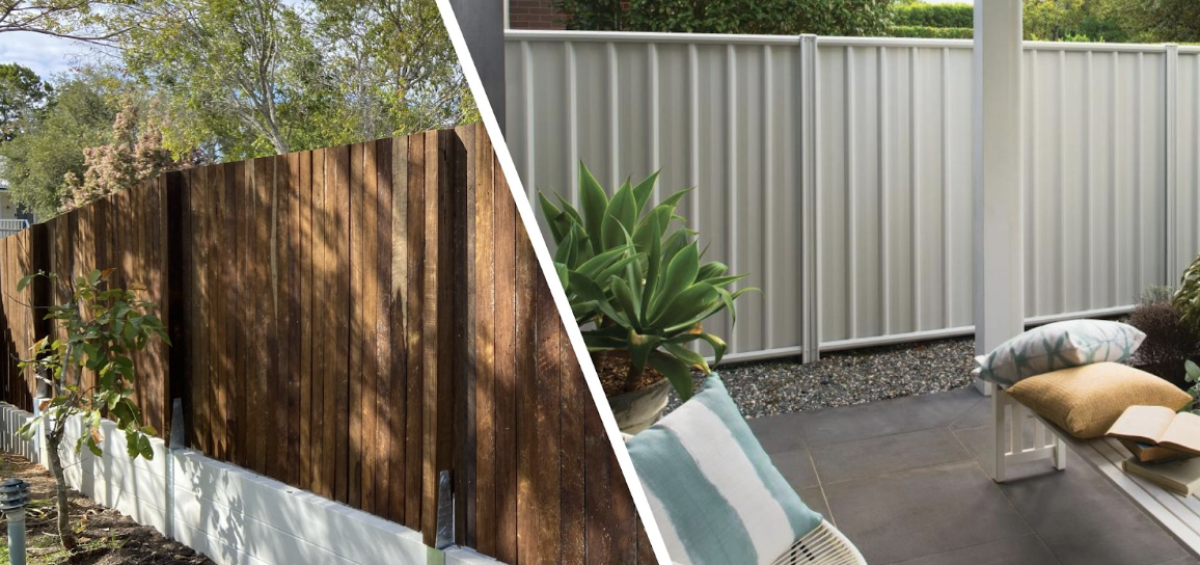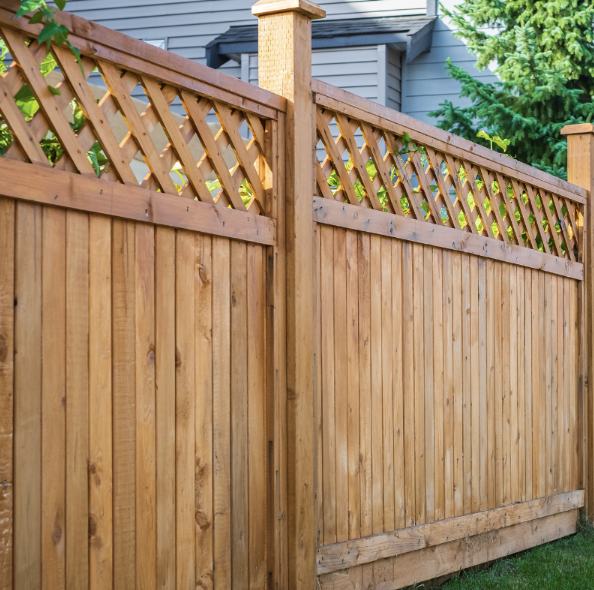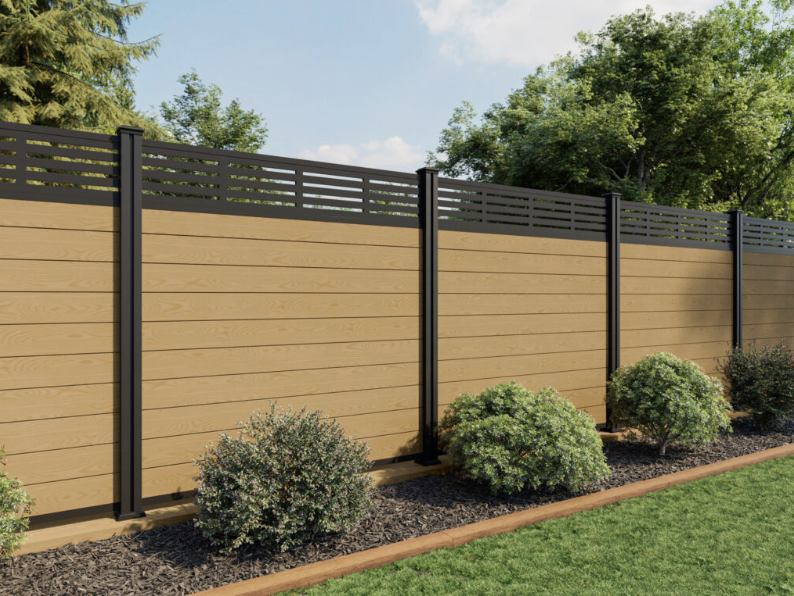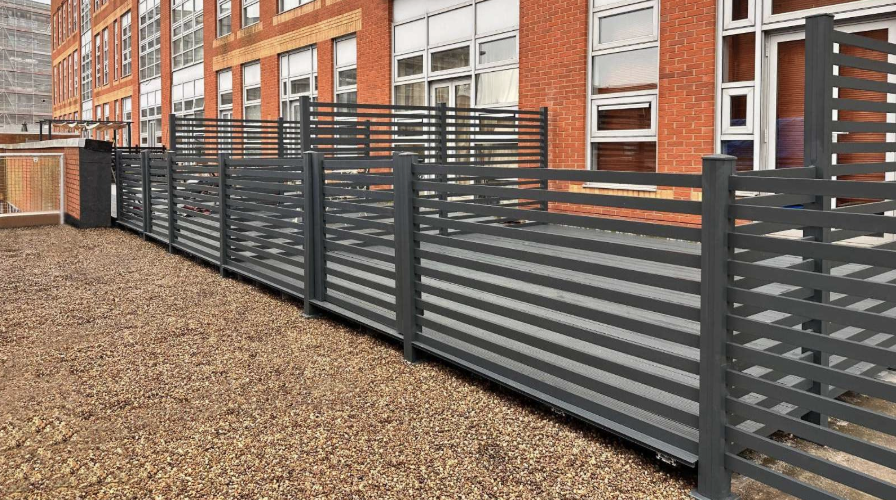Choosing the right fencing is key to enhancing security, privacy, and kerb appeal. Colorbond fence panels are a popular choice for their durability and low maintenance, but they compete with timber, composite, and aluminium options. With the UK’s fencing market valued at over £1 billion and employing 60,000+ professionals , selecting the best material is essential. Let us compare the Colorbond fencing with other modern solutions, weighing the pros and cons to help you make an informed decision.
What is Colorbond Fencing?
Colorbond fencing is a modern and durable fencing solution made from high-quality steel. It features a powder-coated finish, which enhances its strength, weather resistance, and aesthetic appeal. Unlike traditional fencing materials, Colorbond is designed to withstand harsh conditions, including heavy rain, strong winds, and intense UV exposure.
The steel core is coated with a corrosion-resistant layer, ensuring longevity and minimal maintenance. The powder-coated surface prevents fading, peeling, or chipping, keeping the fence looking fresh for years. With a range of contemporary colours available, Colorbond fencing blends seamlessly with modern home exteriors, making it a stylish yet practical choice.
One of its biggest advantages is its sleek, solid design, offering complete privacy and security. Unlike timber, there are no gaps, meaning neighbours and passers-by can’t see through. It also helps reduce noise pollution, making it ideal for urban homes.
Because of its low maintenance and long lifespan, Colorbond fencing is a top choice for homeowners, architects, and developers looking for a modern, durable, and visually appealing fencing solution.
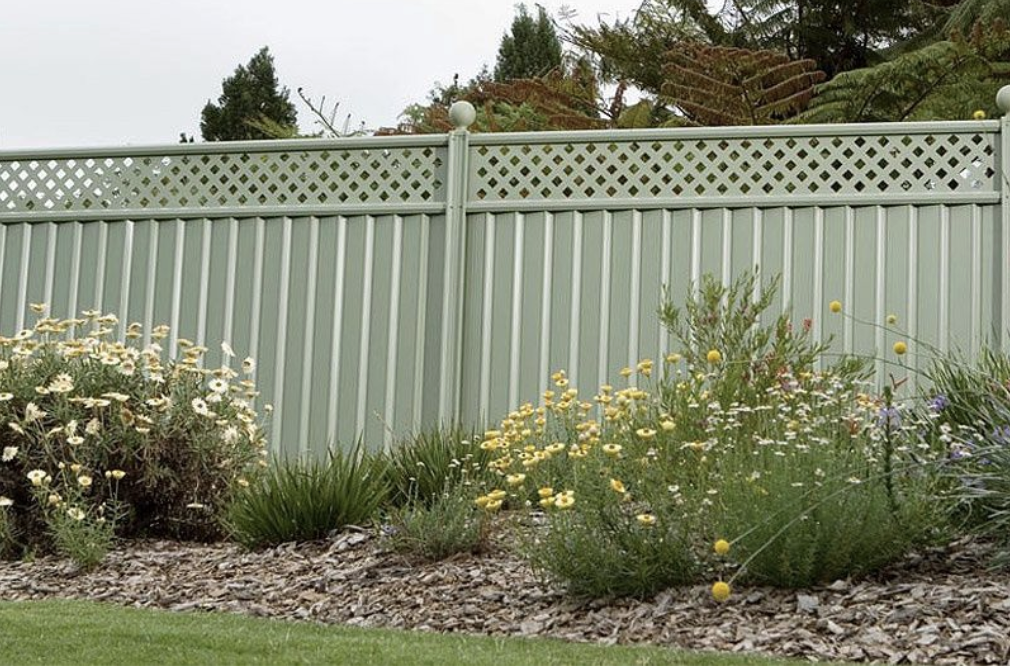 What Are Other Modern Fencing Alternatives?
What Are Other Modern Fencing Alternatives?
While Colorbond fencing is a popular choice, there are several other modern fencing options that offer unique benefits. Timber, composite, and aluminium fencing are three of the main competitors, each catering to different aesthetic preferences, maintenance levels, and budgets.
Timber fencing is a classic and natural choice that blends well with gardens and traditional homes. It’s highly customisable, allowing homeowners to choose different stains, paints, and styles. However, timber requires regular maintenance, including sealing and repainting, to prevent rotting, warping, and termite damage.
Composite fencing combines wood fibres and recycled plastics, making it a sustainable and low-maintenance alternative. It offers the look of timber without the need for ongoing treatment. Composite fencing is resistant to moisture, pests, and fading, making it ideal for long-term durability. However, it tends to be more expensive upfront than other options.
Aluminium fencing is lightweight, corrosion-resistant, and modern. It’s an excellent choice for coastal areas, as it won’t rust or deteriorate from salt exposure. Aluminium fences often have a sleek, minimalist look and require very little maintenance. However, they may not provide as much privacy or sound insulation as Colorbond or composite fencing.
Each of these alternatives offers distinct advantages, depending on budget, design preference, and maintenance requirements. Homeowners should weigh their options carefully to find the best fit for their property.
6 Pros and Cons:
1. Durability & Longevity
✅ Pro (Colorbond): Highly resistant to rust, rot, termites, and weather damage.
Made from galvanised steel with a baked-on powder coating, Colorbond fencing resists corrosion, UV damage, and warping. It’s ideal for coastal and bushfire-prone areas, where moisture and salt can deteriorate other materials. Unlike timber, it doesn’t require frequent upkeep, making it a low-maintenance, long-lasting option.
❌ Con (Colorbond): Can dent from impact.
While durable, Colorbond isn’t impact-proof. Hail, falling branches, or accidental knocks can leave visible dents. Unlike timber or composite fencing, damaged panels often need full replacement, which can be costly in extreme weather areas.
✅ Pro (Other Fences): Composite and aluminium fences offer strong durability.
Composite fencing (recycled wood and plastic) is moisture, pest, and UV-resistant, providing fade-proof durability. Aluminium fencing is lightweight, rust-proof, and corrosion-resistant, making it ideal for coastal environments with minimal upkeep.
❌ Con (Other Fences): Timber requires frequent maintenance.
Timber fencing warps, rots, and attracts termites if not regularly sealed, stained, or painted. Exposure to moisture causes swelling and shrinking, leading to structural instability. In wet or humid climates, untreated timber deteriorates quickly, requiring frequent repairs or replacement.
 2. Maintenance Requirements
2. Maintenance Requirements
✅ Pro (Colorbond): Minimal upkeep – no repainting or sealing required.
Colorbond fencing’s powder-coated finish prevents peeling, chipping, and fading, eliminating the need for staining or sealing. A simple wash with water and mild detergent keeps it looking fresh, making it an effortless, long-lasting option.
❌ Con (Colorbond): Scratches can expose steel, leading to rust.
Though rust-resistant, Colorbond isn’t scratch-proof. If the powder coating is damaged, exposed steel can oxidise and corrode, especially in coastal or humid areas. Unlike timber or composite, scratches are more visible, and deep damage may require full panel replacement.
✅ Pro (Other Fences): Aluminium and composite fencing require little maintenance.
Aluminium fencing won’t rust or corrode, making it ideal for coastal areas with no need for painting or sealing. Composite fencing, a blend of wood fibres and plastic, mimics timber but resists moisture, pests, and rot, offering a hassle-free alternative.
❌ Con (Other Fences): Timber requires frequent upkeep.
Timber fencing needs regular staining, painting, or oiling to prevent fading, warping, or rot. In wet or humid climates, it deteriorates faster, leading to higher long-term maintenance costs. While timber’s natural appeal is desirable, ongoing upkeep makes it less practical for those wanting a low-maintenance solution.
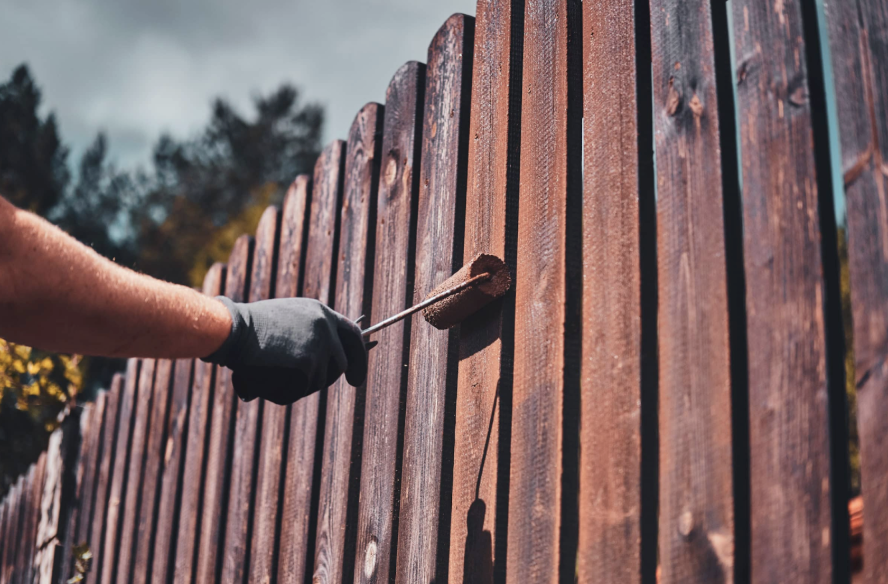 3. Aesthetic Appeal & Design Flexibility
3. Aesthetic Appeal & Design Flexibility
✅ Pro (Colorbond): Sleek, modern designs with a wide colour range.
Colorbond fencing offers clean lines and a smooth finish, perfect for contemporary homes. Available in various colours, it allows homeowners to match roofing, cladding, or landscaping, whether they prefer a minimalist or bold aesthetic.
❌ Con (Colorbond): Less natural-looking than timber.
While modern and stylish, Colorbond lacks timber’s organic texture, making it less suited for traditional or rustic settings. Unlike wood, it can’t be stained or carved, giving it a more industrial appearance.
✅ Pro (Other Fences): Timber provides warmth; composite mimics wood with less upkeep.
Timber fencing offers a classic, natural look that blends well with gardens. Composite fencing replicates wood’s aesthetic but is resistant to fading, rot, and pests, providing a low-maintenance alternative.
❌ Con (Other Fences): Aluminium fencing may reduce privacy.
While lightweight and modern, aluminium fencing often has gaps between slats, offering less privacy and noise insulation than solid Colorbond or composite panels. This makes it less suitable for secluded outdoor areas.
4. Privacy & Noise Reduction
✅ Pro (Colorbond): Solid panels provide full privacy, wind protection, and noise reduction.
Colorbond fencing features gap-free, solid panels, ensuring complete privacy for homes, outdoor areas, and pools. It also acts as a wind barrier, ideal for coastal or open spaces. In urban settings, it helps reduce noise from traffic and neighbours, creating a quieter, more secluded environment.
❌ Con (Colorbond): Can amplify sound within enclosed spaces.
While Colorbond blocks external noise, its hard steel surface reflects sound, potentially causing echoes in narrow gardens or courtyards. This can make voices, footsteps, and barking sound louder, which may be a concern for smaller outdoor areas.
✅ Pro (Other Fences): Timber and composite absorb sound better than metal.
Timber and composite fencing naturally absorb sound, reducing echoes and creating a quieter environment. Wood is particularly effective in noisy neighbourhoods, while composite offers similar noise control with added durability and minimal maintenance.
❌ Con (Other Fences): Aluminium slats and open designs reduce privacy.
Aluminium slat fencing, while sleek, lacks full privacy due to gaps between panels. These openings allow visibility and sound to pass through, making it less effective for noise reduction. Homeowners wanting maximum privacy may prefer solid panel options like Colorbond or composite fencing.
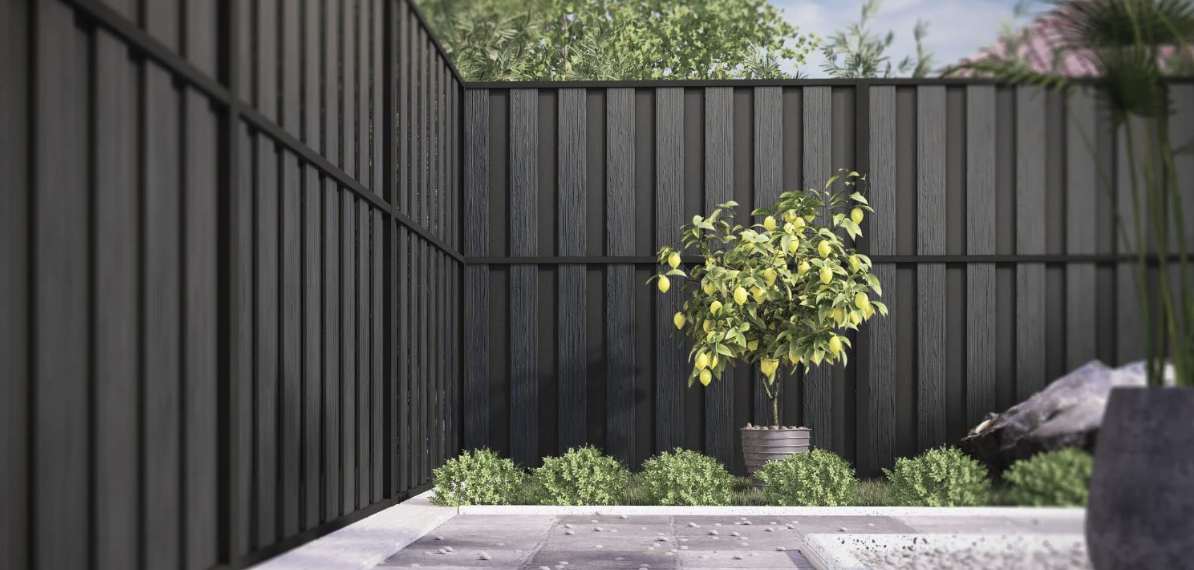
5. Environmental Impact & Sustainability
✅ Pro (Colorbond): Made from recyclable steel, reducing waste.
Colorbond fencing is 100% recyclable, making it a sustainable choice. Unlike timber, it doesn’t deplete natural resources and has a long lifespan, reducing the need for replacements. With no chemical treatments or paints required, it also has a lower maintenance footprint.
❌ Con (Colorbond): Steel production has a high carbon footprint.
Despite its recyclability, steel manufacturing is energy-intensive, producing higher carbon emissions than sustainably sourced timber or composite. However, its durability offsets waste, making it a less disposable option over time.
✅ Pro (Other Fences): Composite fencing is made from recycled materials; timber is biodegradable.
Composite fencing repurposes wood fibres and plastics, reducing landfill waste. Sustainably sourced timber is biodegradable and can be replanted, supporting renewable forestry. Both options offer eco-friendly benefits.
❌ Con (Other Fences): Timber requires deforestation and frequent replacement.
Traditional timber fencing relies on deforestation, harming natural habitats and increasing carbon emissions. Even sustainably sourced wood takes years to regrow. Non-treated timber deteriorates faster, leading to higher long-term waste.
6. Cost & Installation
✅ Pro (Colorbond): Competitive upfront cost compared to timber and composite fencing. DIY-friendly installation with prefabricated panels.
Colorbond fencing offers good value for money, with a competitive upfront cost that sits between timber and composite fencing. It’s a one-time investment with minimal maintenance costs, making it a cost-effective choice in the long run. Installation is also DIY-friendly, as Colorbond panels come pre-fabricated, making them easy to assemble without requiring complex tools or professional expertise. This can help homeowners save on labour costs, making it an appealing option for budget-conscious buyers.
❌ Con (Colorbond): Higher initial cost than basic timber fencing, but long-term savings due to lower maintenance.
Although Colorbond fencing is affordable compared to composite fencing, it costs more upfront than basic timber fencing. However, timber requires frequent maintenance, including staining, painting, and potential repairs, which adds up over time. While the initial investment in Colorbond may be higher, long-term savings from reduced upkeep and durability make it a smarter financial choice in the long run.
✅ Pro (Other Fences): Timber has a lower initial cost, making it attractive for budget-conscious homeowners.
Timber fencing is often the cheapest upfront option, making it a popular choice for homeowners on a budget. It’s widely available and can be custom-built to fit any space, offering design flexibility at a lower price. For those looking for an immediate and affordable fencing solution, timber is an attractive choice.
❌ Con (Other Fences): Long-term maintenance costs can make timber more expensive over time. Composite fencing is pricier upfront than both Colorbond and timber.
Although timber fencing is cheaper initially, ongoing maintenance costs add up. Regular staining, sealing, and repairs can make it more expensive over time, particularly in areas with harsh weather or termite risks. Composite fencing, on the other hand, is one of the most expensive fencing options upfront, often costing more than Colorbond and timber. However, its low maintenance and long lifespan can justify the investment for homeowners looking for a hassle-free, long-term solution.
Which Modern Fencing Solution is Right for You?
- Best for durability & security? → Colorbond or aluminium fencing.
- Best for aesthetics & natural look? → Timber or composite fencing.
- Best for privacy? → Colorbond or composite fencing.
- Best for eco-friendliness? → Composite fencing.
- Best for affordability? → Timber fencing (short-term) or Colorbond (long-term).
FAQs
❓ Is Colorbond fencing better than timber fencing?
✅ Answer: Colorbond requires less maintenance, is more durable, and provides better privacy, but timber offers a more natural look.
❓ Does Colorbond fencing rust?
✅ Answer: Colorbond fencing is designed with anti-corrosion coatings, but scratches exposing raw steel can lead to rust.
❓ Which fencing material lasts the longest?
✅ Answer: Aluminium and Colorbond fencing generally last longer than timber and composite fencing with minimal maintenance.
❓ What is the most affordable modern fencing option?
✅ Answer: Timber fencing is the cheapest upfront, but Colorbond and composite fencing provide better long-term value.
Conclusion & Call-to-Action
Choosing the right modern fencing depends on your budget, maintenance needs, and design preferences. Colorbond fencing is durable, weather-resistant, and low-maintenance, offering full privacy, but it can dent and lacks the natural warmth of timber. Timber fencing is affordable and customisable, blending seamlessly with traditional and natural landscapes, but requires regular staining and sealing to prevent rot and damage. Composite fencing provides the look of wood without the upkeep, making it a long-lasting, eco-friendly choice, though it comes with a higher upfront cost. Aluminium fencing is lightweight, rust-resistant, and modern, ideal for coastal areas, but may lack privacy due to slatted designs.
When selecting fencing, consider long-term costs, durability, and how well it complements your home’s aesthetics. Whether you need low-maintenance security, a natural look, or eco-friendly durability, there’s a fencing solution that suits your needs.
Looking for the perfect modern fencing solution? Contact Contemporary Structures today for expert advice and professional installation!

